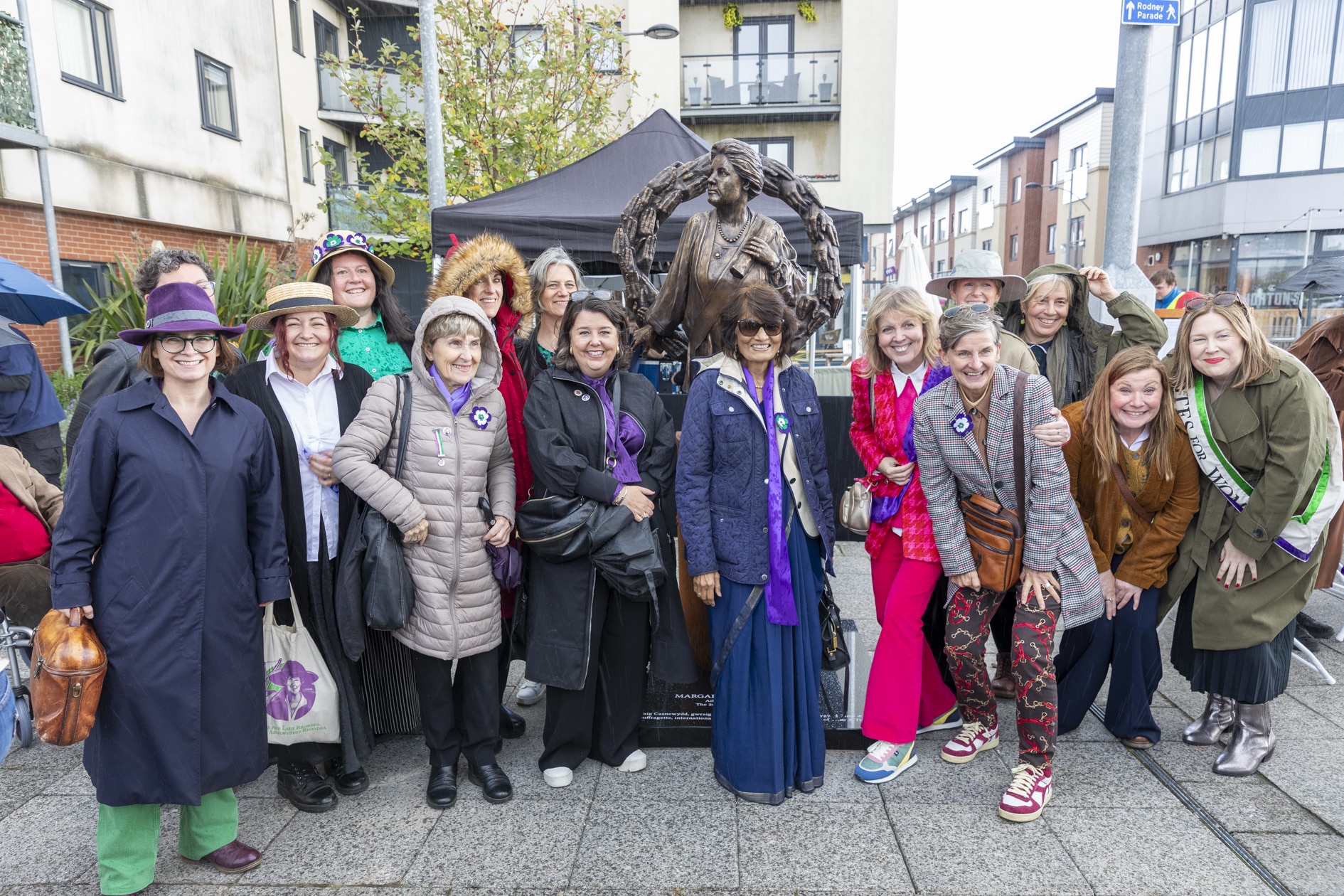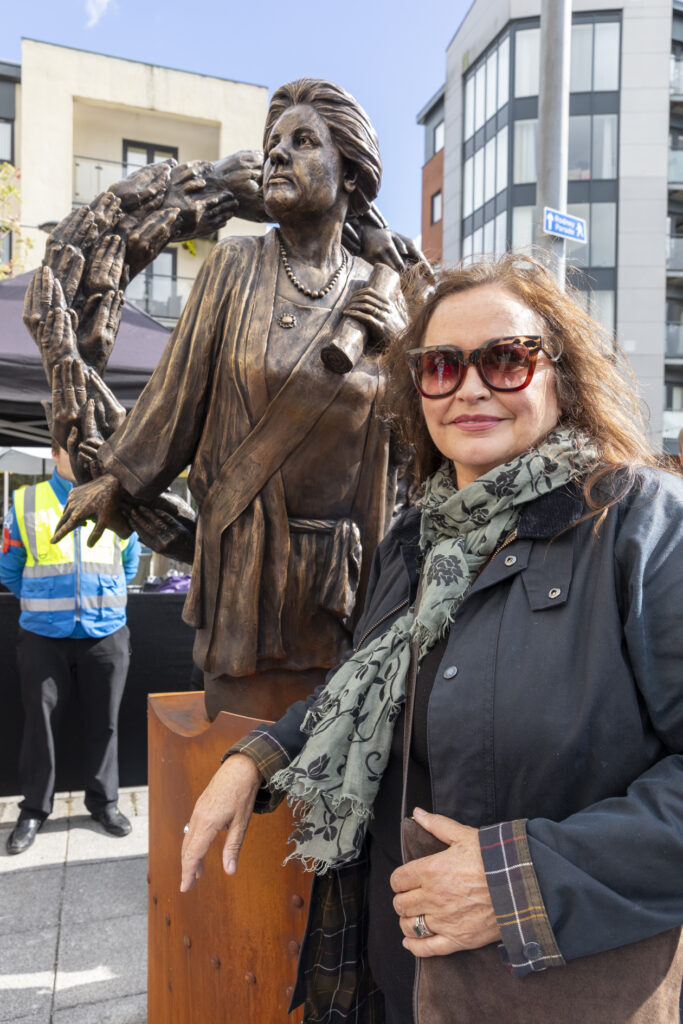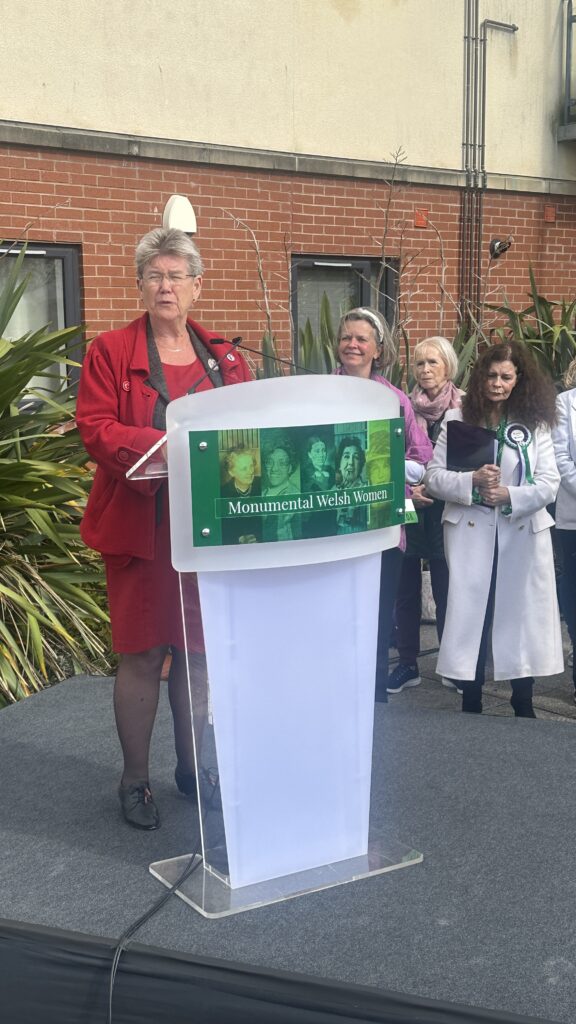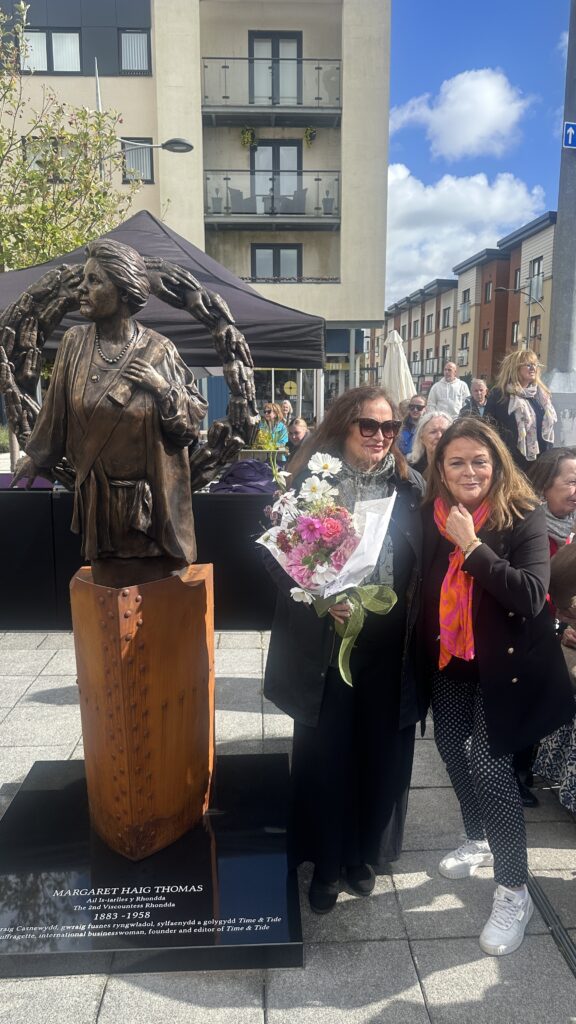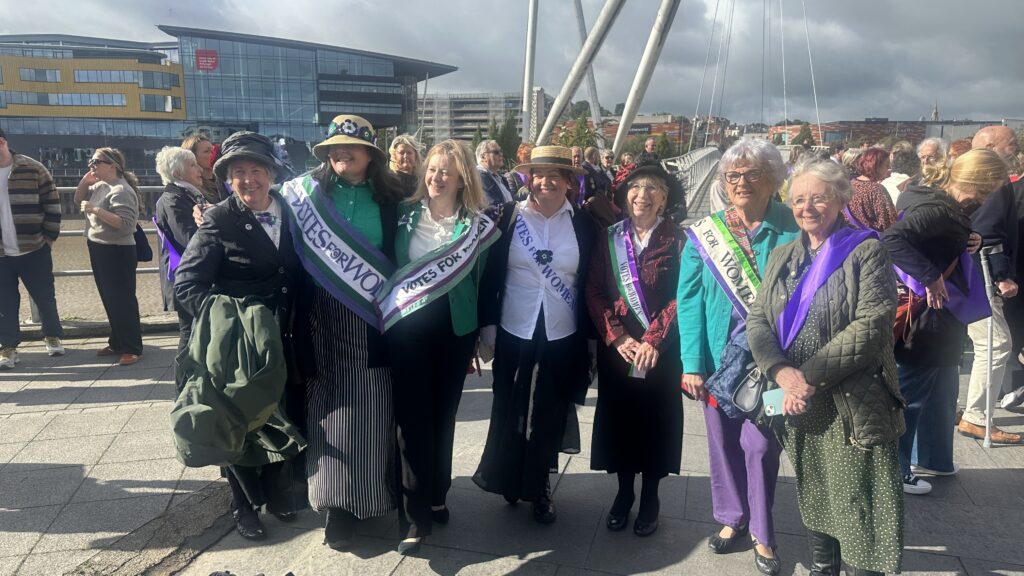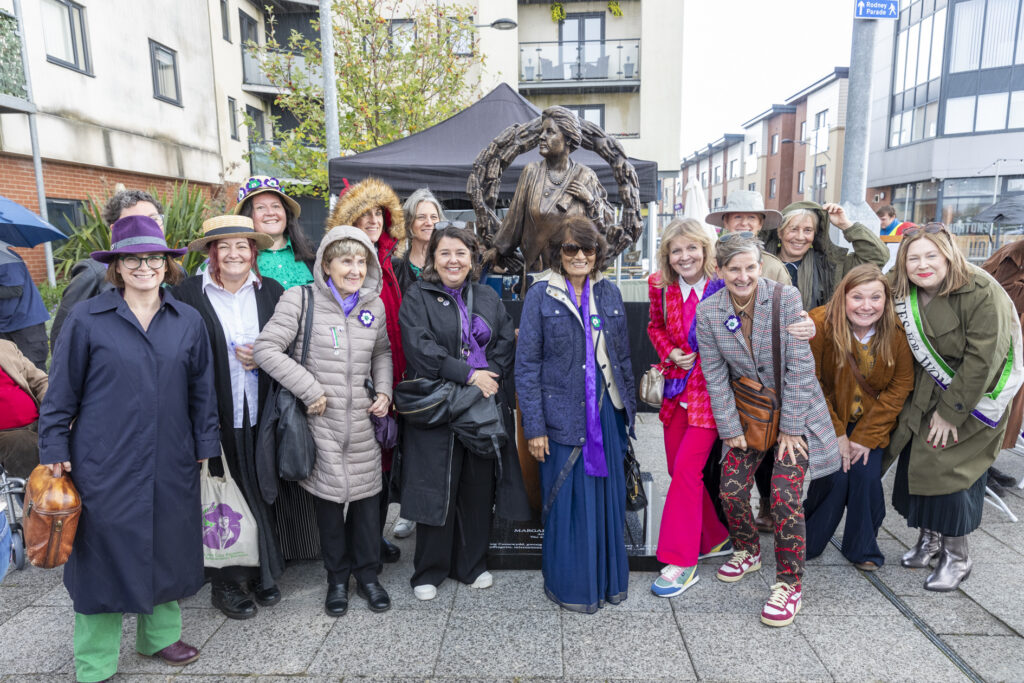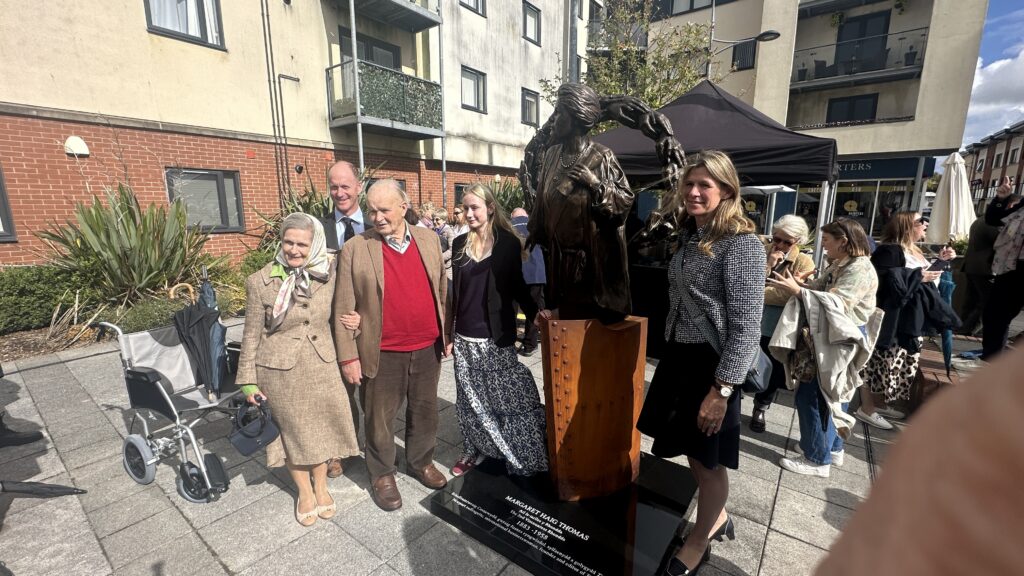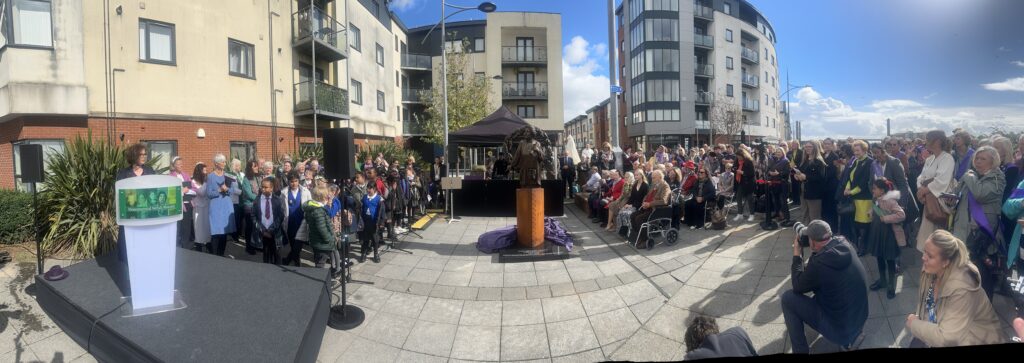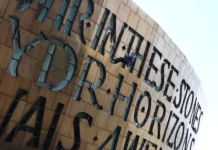A statue to honour suffragette Lady Rhondda (Margaret Haig Thomas) has been unveiled in Newport city centre today (September 26) following a campaign by the Monumental Welsh Women group in partnership with the Statue for Lady Rhondda group and Studio Response.
The statue is the fourth of five statues of named Welsh women being erected by the Monumental Welsh Women group following a national campaign to honour Wales’ hidden heroines, broadcast by BBC Wales in 2019.
We were there for the unveiling ceremony and to meet some of the special guests gathered for the occasion……
The other women on the shortlist were Betty Campbell (statue unveiled in 2021 in Cardiff) Elaine Morgan (statue unveiled in 2022 in Mountain Ash), Sarah Jane Rees, known as Cranogwen (statue unveiled in Llangrannog in 2023) and Elizabeth Andrews (statue due to be unveiled in 2025)
Lady Rhondda, born Margaret Haig Thomas, was a Suffragette, a global business woman, a journalist and editor and lifelong campaigner for women’s equality. Her 40 year campaign for female peers resulted in women being able to sit in the House of Lords. Sadly, she died before the law she fought for was changed, too late to take her own seat.
The 8ft bronze and weathered steel statue of Lady Rhondda is sited on the eastern side of the Millennium Footbridge in Newport city centre. It has been designed and created by sculptor Jane Robbins, known for her figurative works specialising in the human form. Previous works include a statue of Linda McCartney in Campbelltown Museum, Scotland and a bust of Suffragette leader Emmeline Pankhurst for the Pankhurst Centre in Manchester.
The sculpture provides a visual narrative of the life of a daughter of Newport who used her privilege to fight for the rights of women as well as becoming one of the twentieth century’s most successful businesswomen and the first female director of the Institute of Directors. Lady Rhondda was a suffragette who made the fight for the vote front page news and was imprisoned for efforts. She set fire to a post box and was sent to prison, where she went on hunger strike. In 1915 while crossing the Atlantic, she survived the sinking of the Lusitania when it was torpedoed during the war, claiming more than 1,100 lives.
Lady Rhondda’s political campaigning continued throughout her life – she is the reason women are able to sit in the House of Lords. As a pioneering journalist, she founded and edited the groundbreaking, influential weekly political and literary review magazine Time and Tide. Lady Rhondda also used the paper to push her progressive programme called The Six Point Group, which made gender equality paramount.
An important feature of the Lady Rhondda statue is the circle of clasped hands, cast from the hands of around 40 present-day women, among them Lady Rhondda’s biographer, Angela V. John, groundbreaking history Professor Olivette Otele who lives in Newport, Wales footballer and record goal scorer Helen Ward and community champion Tracey Jones, who was nominated by readers of the South Wales Argus for her volunteering work with Pride in Pill. The circle of clasped hands represents women of today and recognises the efforts of women in the past who fought for equality which inspires us to continue to do so for future generations.
An unveiling ceremony took place today (Thursday, 26th September) in Newport city centre. The event began with a performance of a medley of Suffragette songs from Lady Rhondda’s Suffragette Women, who were joined by local school children from St Woolos primary school and Maindee primary school and a reading of a specially commissioned poem by Gillian Clarke.
Helen Molyneux, Chair of Monumental Welsh Women told us…….
“We are delighted to unveil our 4th statue of a ‘real’ Welsh woman, as part of our campaign to address the imbalance in the commemoration and celebration of women’s achievements through public art in Wales. Before the statue of Betty Campbell was unveiled in Cardiff, there was not one single statue of a named Welsh woman in Wales. Now we have four. Lady Rhondda was an inspirational woman who fought for the rights of women throughout her life. We hope this statue will act as an inspiration to the women and girls of Newport to do likewise.”
Sculptor Jane Robbins said….
“Proudly coming from a Welsh background, I was delighted and honoured to be asked to create a statue of Lady Rhondda. Also being a female sculptor working in a largely male dominated profession I thought, WHAT a woman!
She was ahead of her time and didn’t take no for an answer, as she courageously set about changing the lives of women in the UK for the better. Her actions are as relevant today as they were a century ago.”
Welsh Government Cabinet Secretary for Social Justice, Jane Hutt added…..
“Lady Rhondda showed others what could be achieved and helped them to take action, to believe in themselves and what they were fighting for. Where she led, others have followed.
Through her life and work, she illustrated her desire for a better and more equal world, a belief I very much share.
It has been a privilege to be at the unveiling of this magnificent statue which will lead people to find out more about Lady Rhondda and her legacy. In so doing, it will serve to inspire and educate this generation and the next to follow their dreams and fulfil their potential.”
Julie Nicholas from the Statue for Lady Rhondda Campaign said,
“This amazing women-led campaign has put Newport’s most famous daughter on a pedestal in the heart of our city. We are so pleased that Lady Rhondda’s story and her strong connections to Newport are weaved throughout the design of the Monument; from her suffragette activism, to her business & cultural leadership, and the sense of sisterhood that inspired her to work so hard to improve the lives and rights of women and children.”
Prof. Angela V. John, Lady Rhondda’s biographer and member of Monumental Welsh Women told us…..
“Jane Robbins’ imposing statue of Lady Rhondda in Newport is a powerful reminder of her importance in British society in the first half of the twentieth century. Whether as a leading suffragette in Wales, organising war work or championing women peers in Westminster, she was a lifelong advocate of women’s rights. An international businesswoman and the founder and editor of the influential weekly Time & Tide, she remains a potent symbol of what has been and can be achieved by women working together.“
